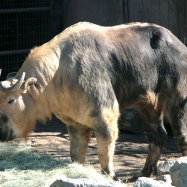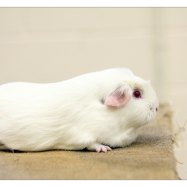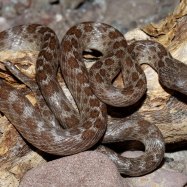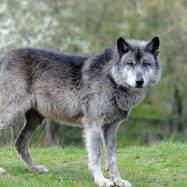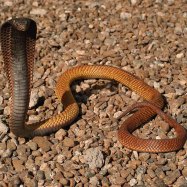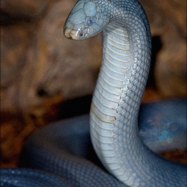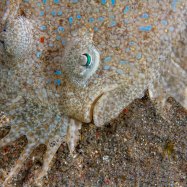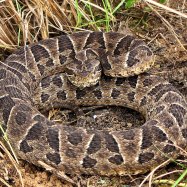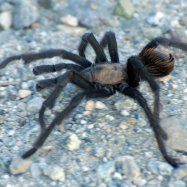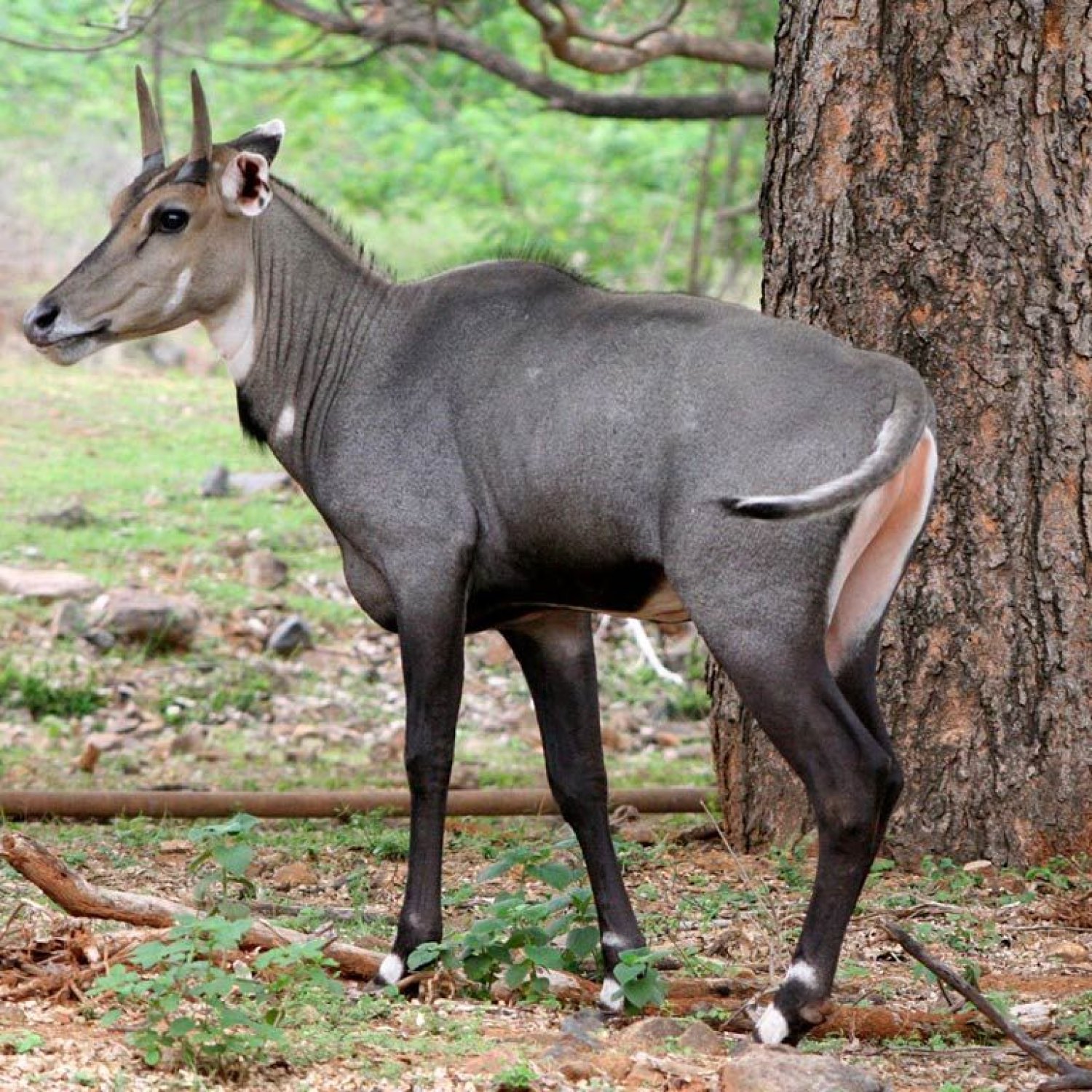
Nilgai
150-200 cm
Discover the majestic Nilgai, a large and stocky animal found in wildlife reserves and national parks in India. Belonging to the family Bovidae, these creatures can grow up to 150-200 cm in length. Also known as the blue bull, the Nilgai is a common sight in the Indian wilderness. Keep an eye out for this beautiful creature on your next safari adventure! #Nilgai #Indianwildlife #Bovidae #SafariAdventures
Animal Details Summary:
Common Name: Nilgai
Kingdom: Animalia
Habitat: Grasslands, scrublands, forests
The Regal Nilgai: A Majestic Antelope in the Indian Subcontinent
The Indian subcontinent is home to a diverse range of fauna, and one of the most magnificent creatures found here is the nilgai, also known as the blue bull. With its greyish-blue to reddish-brown coloration and regal appearance, the nilgai is truly a sight to behold. In this article, we will delve into the unique characteristics of the nilgai, from its scientific classification to its impressive physical features and habitat.The Scientific Classification
The nilgai, scientifically known as Boselaphus tragocamelus, belongs to the kingdom Animalia, phylum Chordata, and class Mammalia Nilgai. It falls under the order Artiodactyla, which includes even-toed ungulates such as goats, sheep, and cattle. Within the order, nilgai belongs to the family Bovidae, making it a distant cousin of familiar animals like cows and buffaloes.The name "nilgai" is derived from the Hindi words "nil," meaning blue, and "gai," meaning cow. This is a fitting name for these magnificent animals as their greyish-blue color gives them a distinct appearance.
Physical Features
Nilgai is the largest antelope species in Asia, with a body shape that can be described as large and stocky. They have a robust build with muscular legs and a prominent hump on their shoulder, giving them a regal appearance.On average, an adult nilgai can grow up to 150-200 cm in length and weigh between 120-240 kg, with males typically being larger than females. They have a short, glossy coat that ranges in color from greyish-blue to reddish-brown, with a lighter underbelly. Males have long, sharp, curved horns that can reach up to 25 cm in length, while females have smaller and straighter horns Northern Jacana.
One of the most striking features of the nilgai is its facial markings. They have a white patch on the face, which starts from the muzzle, goes between the eyes, and ends with a 'V' shape on the forehead. This patch is unique in each individual and is often used to identify individuals by researchers.
Habitat and Distribution
Nilgai has a vast geographical distribution, as it can be found in various habitats ranging from grasslands, scrublands, and forests. They are most commonly found in the Indian subcontinent, particularly in India, which is their country of origin.In India, nilgai can be found in wildlife reserves and national parks, such as Ranthambore National Park, Kanha National Park, and Gir National Park. These reserves provide a safe haven for nilgai to thrive and reproduce, ensuring their conservation.
Feeding Habits
Nilgai is primarily herbivorous, meaning they mainly feed on plants. They have a diverse palate and can consume a variety of plants, including grass, leaves, fruits, and flowers. In the dry season when food is scarce, they also feed on agricultural crops, which can cause conflict with farmers.Their impressive diet and digestive system allow them to survive in a variety of habitats, and their feeding habits also play a crucial role in ecosystem balance.
The Cultural Significance of Nilgai
Nilgai holds a special place in Indian culture and tradition. In many ancient Hindu scriptures, nilgai is mentioned as one of the animals associated with Lord Shiva, one of the principal deities in Hinduism. In some regions of India, nilgai is considered a sacred animal, and harming or killing them is seen as a sin.In Hindu mythology, Lord Krishna, considered an incarnation of Lord Vishnu, is often depicted with a peacock feather on his head and a flautist. Interestingly, Krishna is also known as "nilamani," which translates to "blue gemstone." Some also believe that the flute he plays is made from the horn of a nilgai.
Capturing the Beauty of Nilgai
The majestic appearance of nilgai has captured the hearts of many artists and photographers. Their striking color, graceful movements, and powerful presence make them a popular subject for wildlife photographers and artists.In recent years, the popularity of eco-tourism has given rise to "wildlife safaris," where tourists can observe and photograph animals in their natural habitat. Nilgai sightings are always a highlight for visitors, and some even capture breathtaking shots of them in action.
Threats and Conservation
While nilgai is not classified as an endangered species, they do face threats, primarily due to habitat loss and human-wildlife conflicts. As human populations continue to grow and expand into their natural habitat, nilgai's territories shrink, leading to competition for food and resources.Additionally, farmers often view nilgai as pests as they can cause significant damage to crops, leading to retaliatory killings. This conflict between humans and nilgai is one of the biggest threats to their survival.
To address these threats, various conservation efforts are being undertaken. These include creating protected areas, implementing crop protection measures, and raising awareness among local communities about the importance of conserving these animals and their habitats.
The Impact of Nilgai on Ecosystems
As with any animal, nilgai plays a vital role in maintaining the balance of ecosystems. As herbivores, they consume various plants, helping to control their growth and distribution. This, in turn, affects the health of other plant-eating animals, which rely on these plants for survival.Nilgai also plays a significant role in seed dispersal. As they feed on various fruits and flowers, they spread seeds through their droppings, contributing to the growth of new plants. Their grazing behavior also helps to maintain grasslands, promoting new grass growth and attracting other herbivores.
Conclusion
In conclusion, the nilgai is a remarkable animal, known for its regal appearance, cultural significance, and role in maintaining ecosystem balance. With its impressive physical features, diverse diet, and vast geographical distribution, this majestic antelope has captured the hearts of many. As we continue to work towards preserving our precious natural resources, it is crucial to also protect these magnificent creatures for future generations to admire and appreciate.

Nilgai
Animal Details Nilgai - Scientific Name: Boselaphus tragocamelus
- Category: Animals N
- Scientific Name: Boselaphus tragocamelus
- Common Name: Nilgai
- Kingdom: Animalia
- Phylum: Chordata
- Class: Mammalia
- Order: Artiodactyla
- Family: Bovidae
- Habitat: Grasslands, scrublands, forests
- Feeding Method: Herbivorous
- Geographical Distribution: Indian subcontinent
- Country of Origin: India
- Location: Wildlife reserves and national parks in India
- Animal Coloration: Greyish-blue to reddish-brown
- Body Shape: Large, stocky
- Length: 150-200 cm
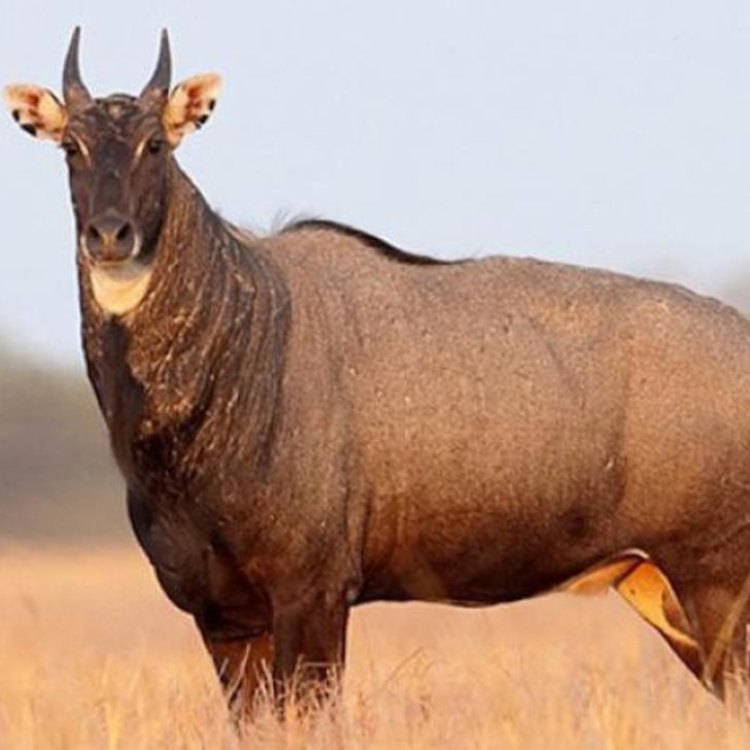
Nilgai
- Adult Size: Males: 180-220 kg, Females: 120-150 kg
- Average Lifespan: 15-20 years
- Reproduction: Sexual
- Reproductive Behavior: Polygynous
- Sound or Call: Low-toned bellows
- Migration Pattern: Non-migratory
- Social Groups: Herds
- Behavior: Diurnal, sociable
- Threats: Hunting, habitat loss, competition
- Conservation Status: Least Concern
- Impact on Ecosystem: Seed dispersal, grazing
- Human Use: Hunted for meat and trophies
- Distinctive Features: Horns in males only
- Interesting Facts: Nilgai is the largest Asian antelope
- Predator: Tigers, leopards, dholes
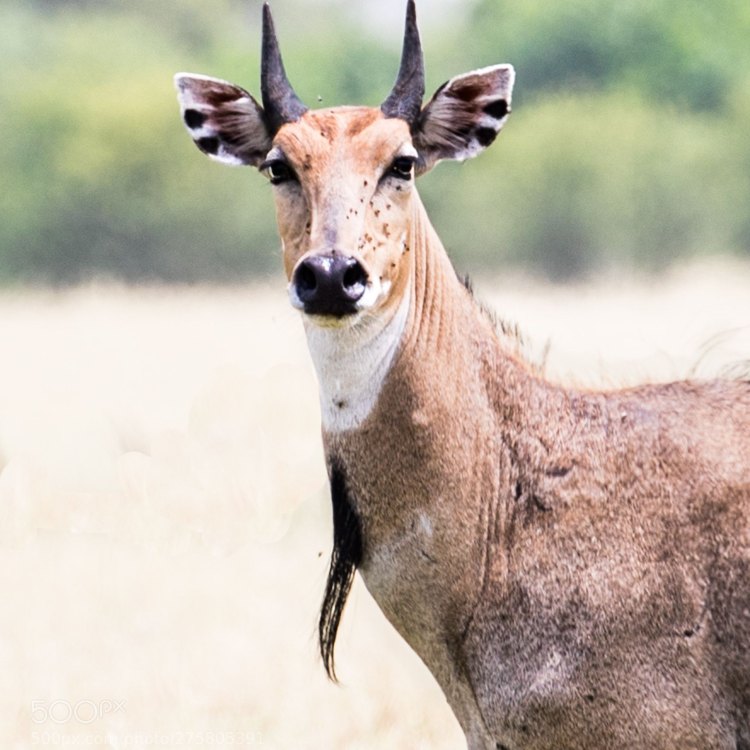
Boselaphus tragocamelus
The Graceful Nilgai: The Largest Asian Antelope That Lives in Harmony With Human and Nature
The vast landscapes of India's plains and low hills are filled with an array of unique and fascinating animals. Among them, the nilgai stands out as one of the largest and most striking creatures. This graceful antelope, also known as the blue bull, has captured the hearts of many with its impressive size, distinctive features, and peaceful nature.The Nilgai (Boselaphus tragocamelus) is a species of antelope native to the Indian subcontinent, primarily found in India, Nepal, and Pakistan PeaceOfAnimals.Com. The name "nilgai" is derived from the Hindi word "nil", meaning blue, and "gai", meaning cow. This reflects the antelope's distinct bluish-grey color, which is more pronounced in males.
With their majestic appearance and gentle behavior, nilgai are a popular subject for wildlife photographers, but there is much more to them than meets the eye. In this article, we will dive into the world of these magnificent creatures and uncover their unique features, behaviors, and impact on their ecosystem.
The Size and Reproduction of Nilgai
Nilgai are the largest Asian antelope, with males weighing between 180-220 kg and females between 120-150 kg. They can reach a height of 1.5 meters at the shoulder, making them an impressive sight to behold. Their size and strength make them a formidable opponent for predators.Nilgai exhibit sexual dimorphism, with males being larger and having a more distinct appearance than females Northern Alligator Lizard. Males have a bluish-grey coat with a white patch on their throat and a white ring around their reddish-brown muzzle. They also have a distinctive set of curved horns, which can grow up to 30 cm long. In contrast, females have a lighter tan coat with no horns.
Nilgai reach sexual maturity at around 2-3 years of age and have a gestation period of 8-9 months. Their reproductive behavior is polygynous, meaning that males typically mate with multiple females. During the breeding season, males will emit low-toned bellows to attract females. After giving birth, females will hide their young in dense vegetation for the first few weeks of their lives.
The Sociable and Non-Migratory Nature of Nilgai
Nilgai are diurnal, meaning they are most active during the day. They live in herds of 10-20 individuals, consisting of one dominant male, his harem of females, and their offspring. These herds are usually led by females and can often be seen grazing together peacefully.One interesting fact about nilgai is their strong sociability, both with members of their own species and other animals. They have been observed interacting with other grazers, such as cattle and buffalo, without any aggressive behavior. This peaceful nature has earned them the nickname "the gentle giants of the Indian plains."
Unlike many other antelope species, nilgai are non-migratory. They have a home range of about 4 square kilometers, which they rarely leave. However, they may move to higher elevations during the hot summer months to escape the heat.
The Threats and Conservation Status of Nilgai
Unfortunately, like many other wild animals, nilgai are facing significant threats to their survival. The most significant threat is hunting, both for meat and trophies. They are also hunted for their skin, which is used for leather production. In some areas, they are considered a nuisance and are shot by farmers to protect their crops.Habitat loss is another major threat to nilgai. As human populations continue to grow, more and more land is being converted for agriculture and urbanization, leaving less space for these animals to roam freely. This not only disrupts their natural behavior but also leads to human-wildlife conflicts.
Nilgai are also facing competition from domestic cattle for resources such as food and water. As grazers, they share the same habitat and resources as cattle, which can lead to conflicts and further threaten their survival.
Despite these threats, the nilgai population is currently listed as "Least Concern" on the International Union for Conservation of Nature (IUCN) Red List. However, their numbers are declining in some areas, and they are considered endangered in Nepal.
The Important Role of Nilgai in Their Ecosystem
Nilgai play a crucial role in their ecosystem, not only as grazers but also as important seed dispersers. As they move through the landscape, they consume a variety of plant species and spread their seeds through their dung. This helps to maintain the balance of plant diversity and supports the growth of new vegetation.Their grazing behavior also has a positive impact on the grasslands and forests they inhabit. By consuming large amounts of vegetation, they prevent the growth of woody plants and help to maintain open landscapes. This, in turn, benefits other species, such as birds and insects, that require a more open environment to thrive.
The Human Use and Interesting Facts About Nilgai
Nilgai holds significant cultural and economic importance for the people of India. They are often featured in Indian folklore, and their majestic appearance has earned them a place in traditional art and literature. They are also a popular subject for ecotourism, with many wildlife enthusiasts flocking to see these magnificent creatures in their natural habitat.In addition to tourism, nilgai also have utilitarian uses for humans. They are hunted for their meat, which is considered a delicacy in some regions. Their hides, which have a distinctive blue color, are also used for leather production.
Nilgai also hold several interesting distinctions. As mentioned earlier, they are the largest Asian antelope. They are also the only members of the genus Boselaphus, making them a unique species. Their distinctive horns are also a characteristic feature, but what makes them even more fascinating is that they are only present in males. This is known as sexual dimorphism and is not commonly observed in antelope species.
Predators of Nilgai
Nilgai may be large and powerful animals, but they are not immune to predators. Their main predators include tigers, leopards, and dholes (Asian wild dogs). These predators primarily target young or weak individuals and rarely pose a significant threat to the population as a whole.However, as human activities continue to disrupt their habitat, predators may become a more significant threat to the nilgai population. With fewer natural resources available, predators may turn to easier prey, such as domesticated animals or even humans.
In Conclusion
The nilgai is a fascinating creature that has adapted to coexist with human and nature. Their large size, peaceful nature, and unique features make them a beloved and respected species in India and beyond. However, they face many threats to their survival, and it is crucial that we take steps to protect these magnificent animals and their habitat.Through responsible conservation efforts and sustainable practices, we can ensure that the grace and beauty of the nilgai continue to roam the Indian plains for generations to come. Let us appreciate and admire these gentle giants and do our part in preserving their existence.
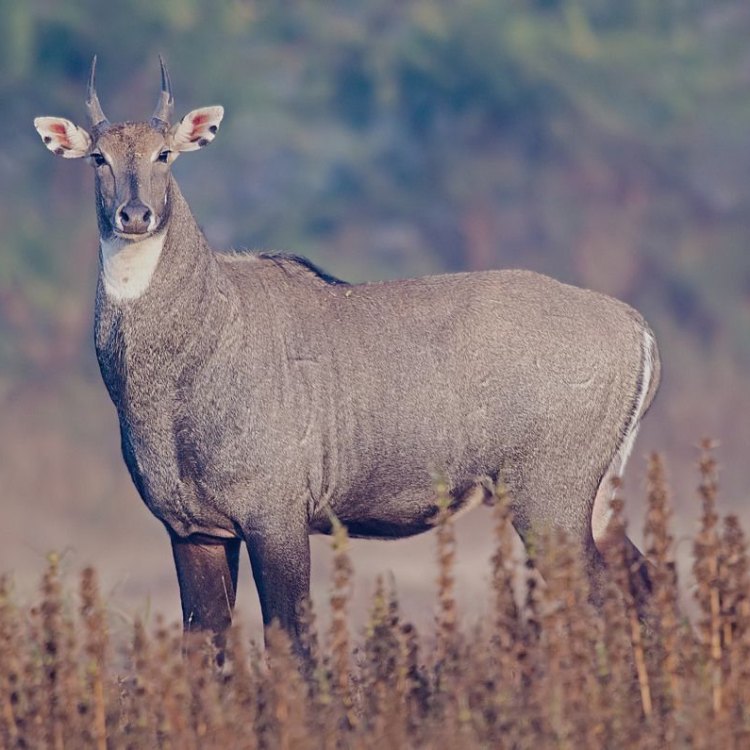
The Regal Nilgai: A Majestic Antelope in the Indian Subcontinent
Disclaimer: The content provided is for informational purposes only. We cannot guarantee the accuracy of the information on this page 100%. All information provided here may change without prior notice.

